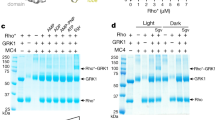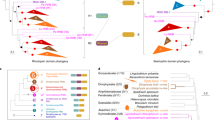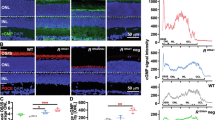Abstract
Human rhodopsin kinase (RK) and a carboxyl terminus-truncated mutant RK lacking the last 59 amino acids (RKC) were expressed in human embryonic kidney 293 cells to investigate the role of the carboxyl terminus of RK in recognition and phosphorylation of rhodopsin. RKC, like the wild-type RK, was detected in both plasma membranes and cytosolic fractions. The Cterminal truncated rhodopsin kinase was unable to phosphorylate photo-activated rhodopsin, but possesses kinase activity similar to the wild-type RK in phosphorylation of small peptide substrate. It suggests that the truncation did not disturb the gross structures of RK catalytic domain. Our results also show that RKC failed to translocate to photo-activated rod out segments. Taken together, our study demonstrate the carboxyl terminus of RK is required for phosphorylation of photo-activated rhodopsin and strongly indicate that carboxyl-terminus of RK may be involved in interaction with photo-activated rhodopsin.
Similar content being viewed by others
Log in or create a free account to read this content
Gain free access to this article, as well as selected content from this journal and more on nature.com
or
Abbreviations
- Rho:
-
photo-activated rhodopsin
- RK:
-
rhodopsin kinase
- ROS:
-
rod outer segments
- SDS:
-
sodium dodecyl sulfate
- PAGE:
-
polyacrylamide gel electrophoresis
- PKA:
-
cyclic adenosine monophosphate-dependent protein kinase
- PKC:
-
calcium-dependent protein kinase
- GPRK:
-
G protein-coupled receptor kinase
References
Wilden U, Hall SW, Huhn H . Phosphodiesterase activation by photoexcitd rhodopsin is quenched when rhodopsin is phosphoprylated and binds the intrinsic 48-kDa protein of rod outer segments. Proc Natl Acad Sci USA 1986; 83:1174–8.
Bennett N, Sitaramayya A . Inactivation of photoexcited rhodopsin in retinal rods: the roles of rhodopsin kinase and 48-kDa protein(arrestin). Biochemistry 1988; 27:1710–5.
Yamamoto S, Sippel KC, Berson EL Dryja TP . Defects in the rhodopsin kinase gene in the Oguchi form of stationary night blindness. Nat Genet 1997; 15:175–8.
Inglese J, Freedman NJ, Koch JW and Lefkowitz RJ . Structure and mechanism of the G protein-coupled receptor kinase. J Biol Chem 1993; 268:23735–8.
Inglese J, Glickman JF, Lorenz W . Isoprenylation of a protein kinase: Requirement of farnesylation/alpha-carboxyl methylation for full enzymatic activation of rhodopsin kinase. J Biol Chem 1992; 267:18991–8.
Richard TP, Inglese J, Lefkowitz RJ . Protein kinase that phosphorylates activated G protein-coupled receptors. FASEB J 1995; 9:175–82.
Murga C, Esteban N, Ruiz-Gomez A, Mayor F Jr . The basal subcellular distribution of β(adrenergic receptor kinase is independent of G-protein β γ subunit. FEBS Letter 1997; 409:24–8.
Papermaster DS . Preparation of antibodies to rhodopsin and the large protein of rod outer segments. Methods Enzymol 1982; 81:48–52.
Palczewski K, McDowell JH, Hargrave PA . Purification and characterization of rhodopsin kinase. Biochemistry 1988; 27:2306–3.
Onorato JJ, Palczewski K, Regan JW, Caron MG, Lefkowitz RJ, Benovic JL . Role of acidic amino acids in peptide substrates of the beta-adrenergic receptor kinase and rhodopsin kinase. Biochemistry 1991; 30:5118–25.
Chen CY, Dion SB, Kim CH, Benovic JL . Beta-adrenergic receptor kinase Agonist-dependent receptor binding promotes kinase activation. J Biol Chem 1993; 268:7825–31.
Inglese J, Koch WJ, Caron MG . Isoprenylation in regulation of signal transduction by G protein-coupled receptor kinase. Nature 1992; 359:147–50.
Papermaster DS, Dreyer WJ . Rhodopsin content in the outer segment membrane of bovine and frog retinal rods. Biochemistry 1974; 13:2438–44.
Kuhn H . Light-regulated binding of rhodopsin kinase and other proteins to cattle photoreceptor membranes. Biochemistry 1978; 21:4389–95.
Sallese M, Mariggio S, Collodel G, Moretti E, Piomboni P, Baccetti B, DeBlasi A . G protein-coupled receptor kinase GRK4. Molecular analysis of the four isoforms and ultrastructural localization in spermatozoa and germinal cells. J Biol Chem 1997; 272:15294–8.
Acknowledgements
This research was supported by research grants from National Natural Science Foundation of China (39630130 and 39625015), Chinese Academy of Sciences (KJ951-B1-608 and KY951-A1-301), Shanghai Research Center of Life Sciences, Shanghai Educational Development Foundation, and German Max-Planck Society. The authors wish to thank Dr. Lin Li for recombinant bovine GRK2 and Jianfang Din for technical assistance help in preparing anti-RK antibodies.
Author information
Authors and Affiliations
Corresponding author
Rights and permissions
About this article
Cite this article
Yu, Q., Cheng, Z., Zhao, J. et al. Carboxyl terminal of rhodopsin kinase is required for the phosphorylation of photo-activated rhodopsin. Cell Res 8, 303–310 (1998). https://doi.org/10.1038/cr.1998.30
Received:
Revised:
Accepted:
Published:
Issue date:
DOI: https://doi.org/10.1038/cr.1998.30



